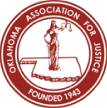
When tragedy strikes, and a loved one passes away due to the negligence or misconduct of another, the grief can be compounded by the pursuit of justice. Wrongful death claims emerge under such circumstances, with their objective being to hold the responsible party accountable. This blog post will examine the process of proving wrongful death, providing essential insights for anyone facing this challenging situation.
Understanding the Fundamentals: Defining Wrongful Death
Before getting into the specifics of proving wrongful death, one must clearly understand what wrongful death means in a legal context. By legal definition, wrongful death is a scenario where an individual’s death results from another party’s negligence, carelessness, intentional actions, or recklessness.
Wrongful deaths may occur in various circumstances, including car accidents, medical malpractice, workplace accidents, or product liability incidents. In these situations, the burden lies on the plaintiff to establish the defendant’s responsibility.
Our Team Is Here To Assist You Every Step Of The Way.
SPEAK TO AN ATTORNEY TODAYThe Bedrock of a Wrongful Death Claim: Four Essential Elements
Establishing a successful wrongful death claim can be a rigorous process involving the proof of four integral elements. Negligence, breach of duty, causation, and damages are the pillars supporting the structure of a claim. You must understand them in depth as a critical part of navigating the intricacies of a wrongful death case.
Negligence: Establishing Fault
The first and foremost aspect that needs to be demonstrated is negligence. This element stipulates that the survivors or the estate must establish that the death of their loved one was not merely a random occurrence or a result of natural causes. The family must prove the death was instead a direct consequence of the defendant’s actions, whether negligent, reckless, or intentional.
Breach of Duty: an Obligation Unmet
Beyond proving negligence, a successful wrongful death claim also rests on demonstrating a breach of duty. This duty of care refers to the legal obligation the defendant had towards the deceased. The nature and extent of this duty may vary significantly depending on the relationship between the parties.
Causation: Drawing the Connection
The causation element builds upon the previous two factors, tying them together. Here, it must be proven that the defendant’s breach of duty was not a mere incident that coincided with the death but directly resulted in the decedent’s death.
Damages: Quantifying the Impact
Finally, tangible damages must have arisen from the death to complete the wrongful death claim. This goes beyond the emotional toll and focuses on the financial injuries caused by the death. These damages can span a wide spectrum, including the immediate financial burdens of medical expenses, funeral and burial costs, and long-term monetary damages such as loss of expected income.
Strengthening Your Claim: Gathering Pertinent Evidence
The strength of a wrongful death claim often hinges on the quality and scope of evidence available. The following forms of evidence can be instrumental in supporting your claim:
- Police and accident reports: In situations such as traffic accidents, these reports can offer objective, detailed accounts of the incident, including potential violations of law or regulations.
- Medical records and autopsy reports: These documents can prove invaluable, especially in medical malpractice cases, as they detail the deceased’s health condition and cause of death.
- Witness testimonies: Eyewitness accounts can help establish the events leading to the death and support the negligence claim.
- Expert testimonies: Professional input from accident reconstruction experts, medical experts, and forensic specialists can provide insights into complex technical aspects of the case.
- Photographic and video evidence: Any available visual documentation of the incident or the aftermath can be extremely beneficial in strengthening your claim.
- Financial records: Financial records showing the deceased’s income, potential future earnings, and incurred costs due to the incident can be valuable to prove the monetary damages resulting from the death.
Economic and Non-Economic Damages
Damages represent the monetary compensation that the survivors or the estate of the deceased may be entitled to and are often the driving force behind filing such claims. These damages are typically classified into two categories, economic and non-economic.
Economic Damages: the Financial Impact
Economic damages constitute the losses stemming from the death that can be backed up with receipts and records. These are objective costs that can be calculated based on the financial burden imposed on the deceased’s estate or their dependents due to the death. A broad range of costs falls under this category, including:
- Medical expenses: The costs incurred due to the medical care the deceased received for their final illness or injury are recoverable. This can encompass emergency room visits, prolonged hospital stays, surgeries, medications, and other necessary medical procedures or services.
- Funeral and burial costs: The expenses related to the deceased’s funeral and burial services, including but not limited to, costs for the funeral service, casket, burial plot, headstone, and any other associated costs, are recoverable as economic damages.
- Loss of income and benefits: This represents the income the deceased would have earned had they lived their normal expected lifespan, considering their age, health, life expectancy, occupation, talents, skill level, and other factors influencing earning capacity. Additionally, the loss of benefits, such as pension plans or healthcare coverage that the deceased would have provided, can also be included.
- Loss of inheritance: If the deceased’s untimely death has resulted in a significant decrease in the estate’s value that would have been passed on to the heirs, the loss of inheritance can also be factored into economic damages.
Non-Economic Damages: the Intangible Personal Losses
While economic damages attempt to reimburse the financial impact of the death, non-economic damages delve into the more intangible, subjective areas of loss that do not carry a clear monetary value.
- Pain and suffering: This pertains to the physical pain and emotional anguish the deceased experienced before their death due to their final injury or illness. Their pain’s severity, duration, and nature are considered.
- Loss of care, protection, and companionship: These damages compensate the survivors for the loss of love, moral support, guidance, and companionship they suffer due to the death. For example, in the case of a parent’s death, the loss would extend to the parental guidance the child would miss.
- Loss of consortium: For the surviving spouse or partner, there may be compensation for the loss of companionship, affection, comfort, and sexual relations. These are collectively termed “loss of consortium.”
The Role of Legal Counsel: How an Attorney Can Assist
Navigating a wrongful death claim can be emotionally draining and legally challenging. Expertise in legal processes, court procedures, and negotiation skills are often required to establish a successful claim. Engaging a competent wrongful death attorney can be instrumental in this journey. They can assist in gathering and analyzing evidence, meeting procedural deadlines, and negotiating with insurance companies.
Experienced attorneys can guide state-specific laws about wrongful death, as these laws can vary significantly. From the statute of limitations to who can file a wrongful death lawsuit, understanding the nuances of these laws can significantly influence the outcome of the claim. Contact BDIW Law to learn how we can help you.








